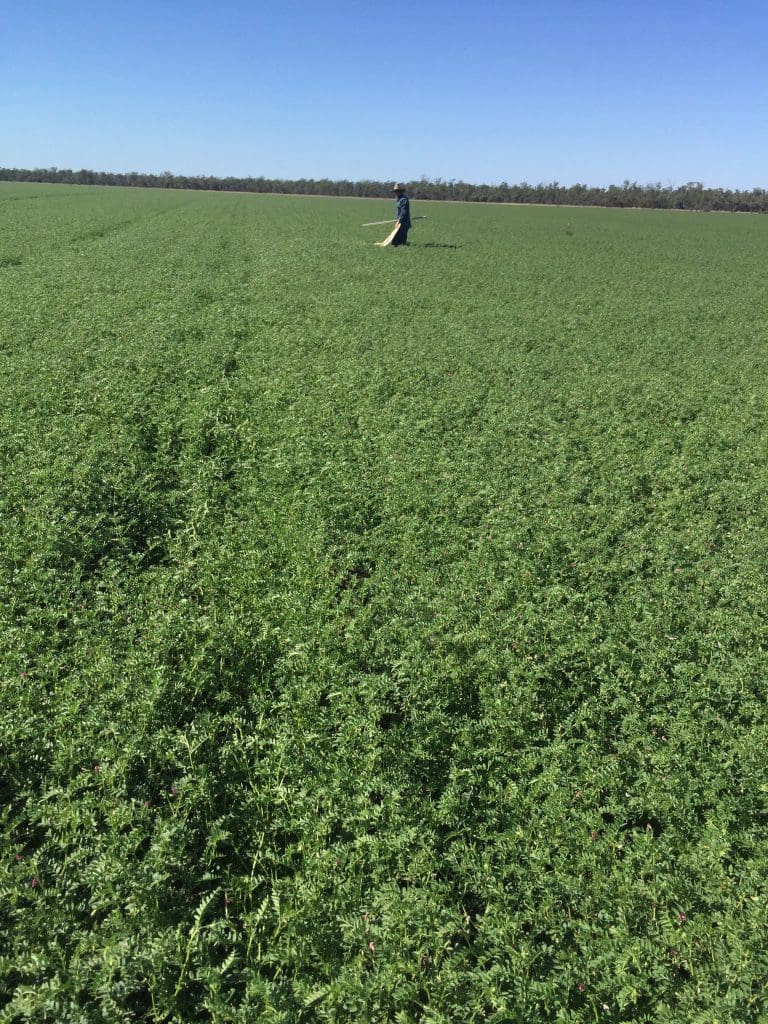
Chickpea crops like this one in Central Queensland are the best to be found in Australia this winter.
“We have pegged the desi chickpea crop at around 220,000t, and the kabuli crop grown in southern NSW, Victoria, South Australia and Western Australia at a relatively large 80,000t,” Pulse Australia chief executive officer, Nick Goddard said.
Beyond chickpeas
From the Southwest slopes of NSW to the Victorian border, prospects are better, although geographically patchy with this area receiving on 20-50% of average rainfall this season.
“The late break, combined with cold weather and frosts down to -6 degrees, has further delayed crop progress.”
In Victoria, occasional showers on crops in the Mallee and Wimmera districts have delivered small amounts of rain, but enough to sustain crops from establishment to now, and good falls over the past week have been very welcome.”
In South Australia, the situation is similar, with the Lower Eyre Pensinsula and South East the most promising to date, and Mid North and Yorke Peninsula crops having an average season, and are in danger of suffering stress through limited subsoil moisture and a lack of recent rain.
Crops on the Upper Eyre Peninsula and in the Mallee are already suffering moisture stress.
Western Australia had a dry start to the season, but has since had sufficient rain in some areas to enable crops to develop.
Rainfall has been sporadic and in pockets, rather than steady and widespread.
The Esperance zone is unusually dry, and this will limit its lentil production this year.
| State | Chickpeas | Field peas | Faba/broad beans | Lentils | Lupins | TOTAL |
| QLD | 217300 | 0 | 0 | 0 | 0 | 217300 |
| NSW | 22200 | 33200 | 12500 | 2600 | 50000 | 120500 |
| VIC | 46000 | 80050 | 70500 | 135000 | 31000 | 362350 |
| SA | 15900 | 149350 | 127300 | 199300 | 48000 | 539850 |
| WA | 8200 | 39000 | 6000 | 10000 | 410000 | 473200 |
| National | 309600 | 301600 | 216300 | 346900 | 536000 | 1713400 |
Pulse production estimates. Source: Pulse Australia
Grain Central: Get our free daily cropping news straight to your inbox – Click here

HAVE YOUR SAY